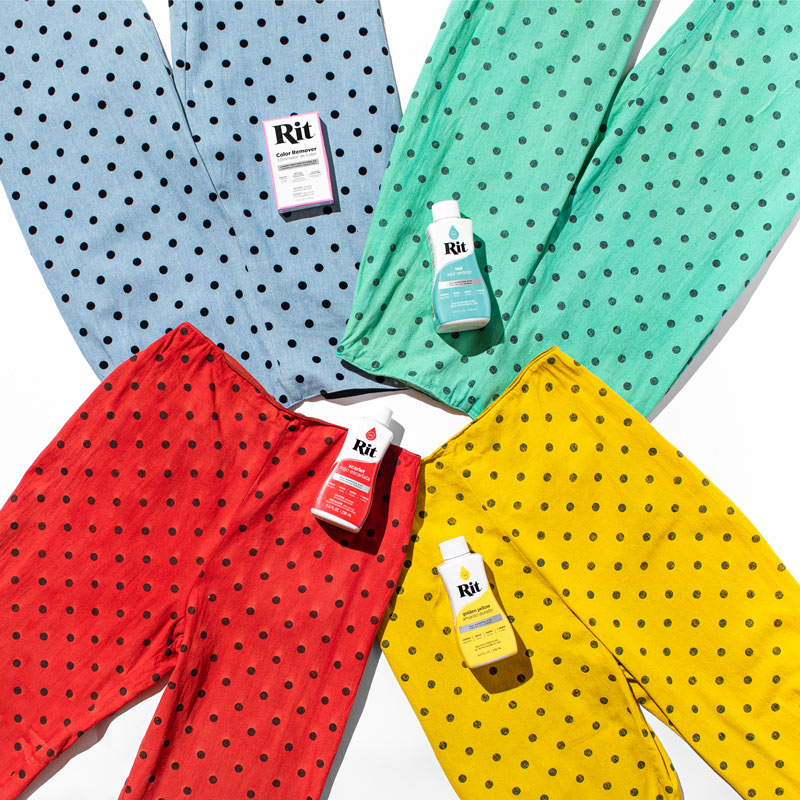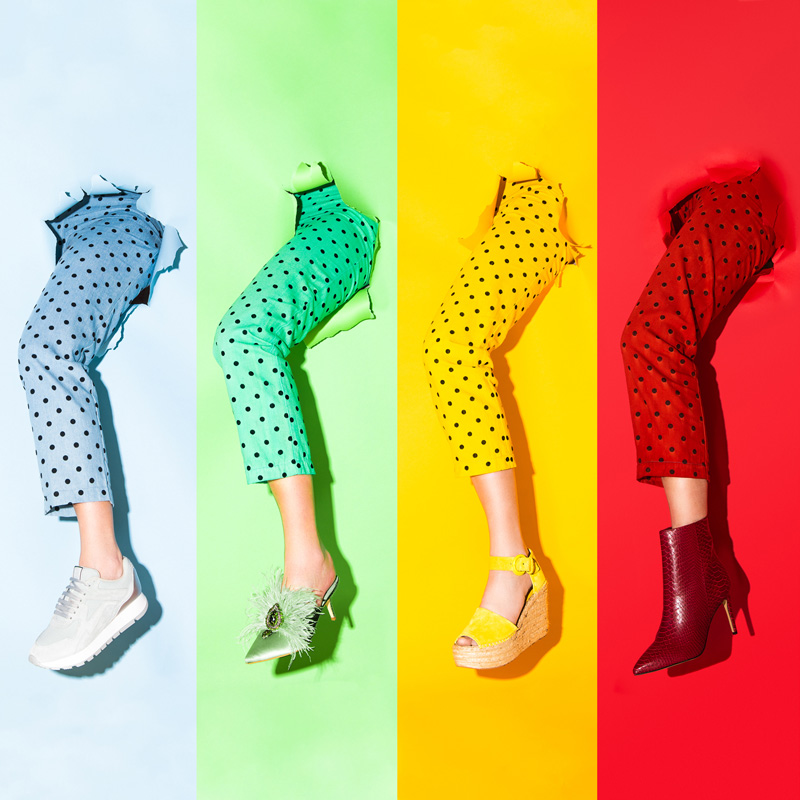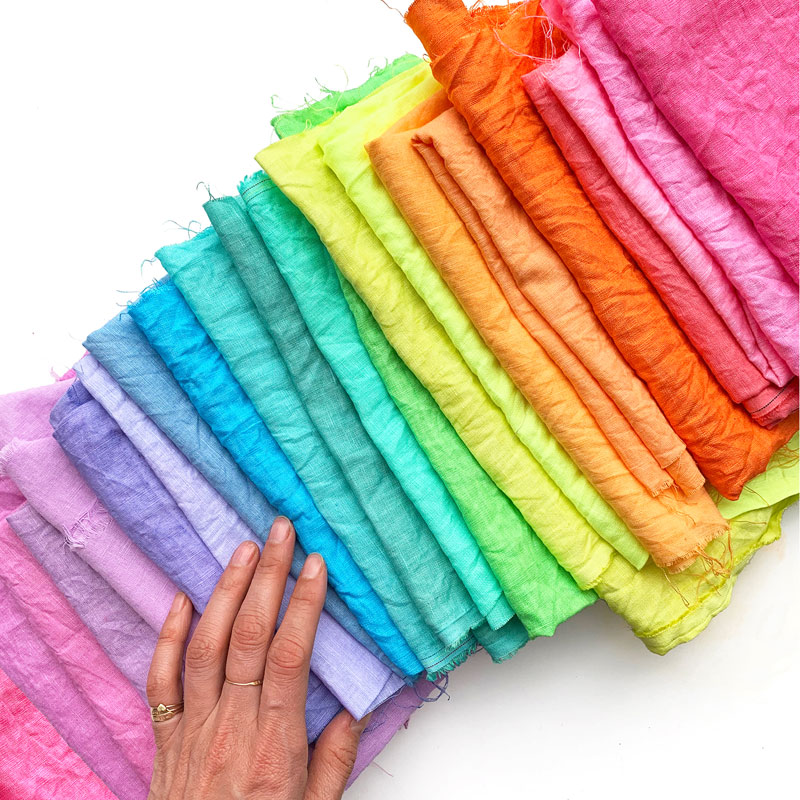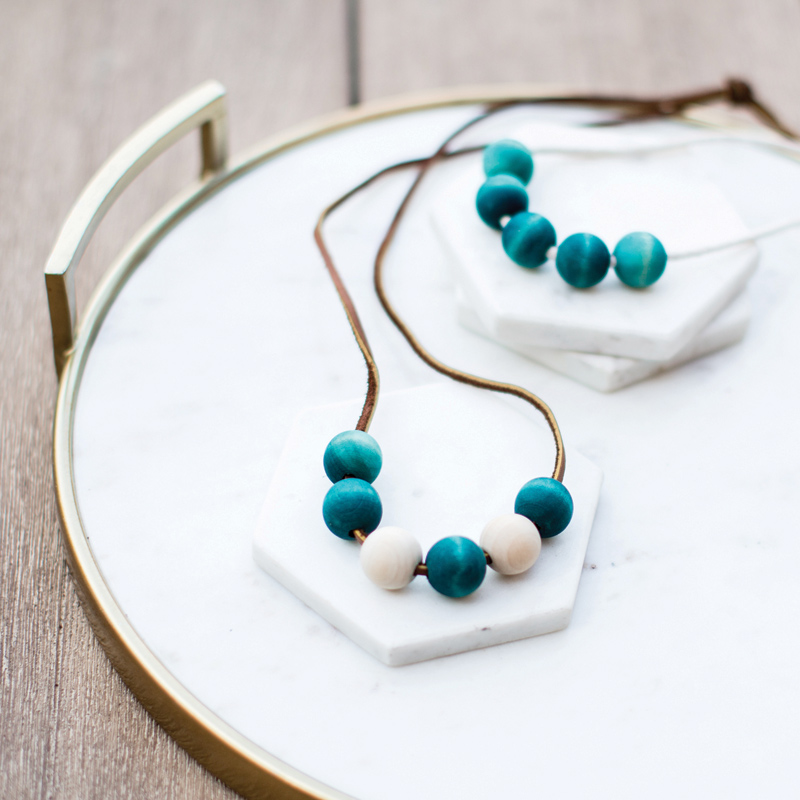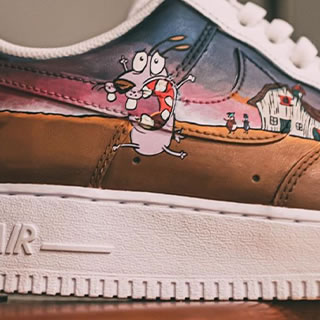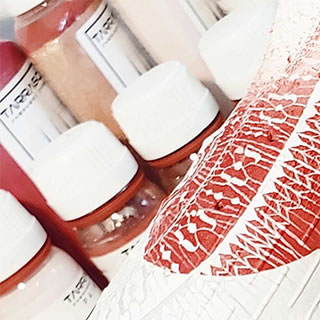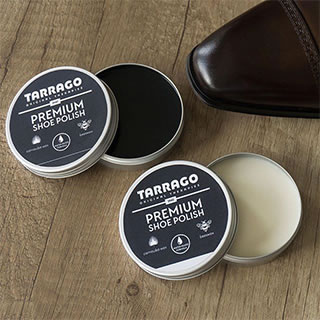RIT DYE All-Purpose Liquid Dye 8oz HYACINTH / HIACYNT uniwersalny barwnik w płynie do tkanin i innych powierzchni
Hiacynt barwnik w płynie do tkanin


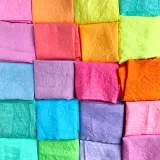

- Cena: €9.08 €7.72 / szt.
-
-
szt.
- Watch the product:
- Code: RIT-LIQ_HYAC_88419
- Manufacturer: Rit Dye
-
Availability:
 None
None
30 dni na zwrot
profesjonalne doradztwo - 100% zadowolonych klientów
Rekomendowane materiały:
Podstawowe właściwości produktu:
Produkt najczęściej stosowany do:
RIT DYE All-Purpose Liquid Dye 8oz HYACINTH / HIACYNT uniwersalny barwnik w płynie do tkanin i innych powierzchni - sklep Customizacja
Doskonałej jakości płynny uniwersalny barwnik w kolorze HIACYNT, który wykorzystasz do farbowania tkanin i innych powierzchni. Ten delikatny niebiesko-fioletowy kolor, zachwycający kwitnieniem od swojej imiennika, jest najsłodszy w całym spektrum.
Barwnik do tkanin, ale nie tylko
Prosty w zastosowaniu, nietoksyczny barwnik RIT DYE to produkt gotowy do użycia już po odkręceniu zabezpieczenia. Gotowy do nadania żywych, głębokich kolorów niemal każdemu rodzajowi tkaniny lub mieszanki tkanin. Świetnie współpracujący z jeansem. Idealny do regeneracji i odnawiania wyblakłych ubrań, a także do całkowitej zmiany koloru odzieży, butów, dodatków, akcesoriów i elementów wystroju wnętrz. Barwnik w płynie RIT DYE możesz wykorzystać również do regeneracji źle wypranych, zabarwionych czy odbarwionych ubrań oraz do jakże atrakcyjnej i popularnej customizacji odzieży. Przy jego pomocy personalizacja jeansowych kurtek, bawełnianych koszulek i bluz, czy sukienek zyska wiele nowych możliwości. Chcesz stworzyć coś wyjątkowego? Barwniki RIT DYE od dziesięcioleci pomagają w farbowaniu ubrań, butów i dekoracji. Ten magiczny barwiący płyn do farbowania otworzy Ci nowe artystyczne ścieżki w rękodziele. Za jego pomocą możesz regenerować i zmieniać kolor tkanin i innych materiałów. Możesz też tworzyć wzory, farbować zanurzeniowo, osiągać efekty Tie Dye lub Shibori. Niezależnie od tego, czy ratujesz wyblakłe lub odbarwione jeansy, tworzysz kostium czy przygotowujesz dekoracje na imprezę - na początek potrzebujesz tylko butelki z barwnikiem RIT DYE, pralki i plastikowego pojemnika lub zlewu ze stali nierdzewnej. Tyle wystarczy, byś mogła odnawiać, tworzyć i dobrze się przy tym bawić. Różne kolory barwników RIT DYE Liquid możesz ze sobą mieszać, by osiągać kolejne odcienie. Odkryj świat barwienia i farbowania ubrań w najlepszym możliwym wydaniu!
Barwniki RIT DYE Liquid doskonale nadają się do farbowania: jeansu, bawełny, wełny, jedwabiu, sztucznego jedwabiu, lnu, wiskozy, nylonu, tiulu, drewna, papieru, korka i wielu innych materiałów oraz powierzchni.
Zawartość opakowania: 8oz / 236ml
Inne rodzaje barwników RIT DYE
Barwnik w płynie RIT DYE Liquid działa w bardzo podobny sposób, jak barwnik w proszku RIT DYE Powder. To 2 różne wersje tego samego doskonałego pigmentu. W przypadku płynu zyskujesz możliwość łatwiejszego dozowania i mieszania kolorów. Zapoznaj się również z ofertą barwników do tkanin i materiałów syntetycznych - RIT DYEMORE Liquid for Synthetics, które możesz wykorzystywać do farbowania poliestru, akrylu, nylonu, niektórych tworzyw sztucznych i mieszanek.
Zwróć uwagę na skład tkaniny i temperaturę kąpieli barwiącej
Barwnik RIT All-Purpose jest przeznaczony do tkanin naturalnych, takich jak bawełna, len, wełna, jedwab i ramia. Barwi również wiskozy i nylon. Jeśli jednak tkanina lub ubranie, które chcesz zafarbować, zawiera ponad 35% materiału syntetycznego (takiego jak poliester, akryl lub octan), powinieneś użyć barwnika RIT DyeMore for Synthetics.
Barwniki RIT uwielbiają gorącą wodę, która jest kluczowa w skutecznym procesie farbowania tkanin:
- Jeżeli farbujesz tkaniny naturalne (takie jak bawełna, len, jedwab lub wełna), użyj barwnika uniwersalnego RIT All-Purpose w temperaturze od 60°C do 71°C. Jeśli woda z kranu nie jest wystarczająco gorąca, podgrzej ją na kuchence i dodaj do kąpieli barwiącej.
- Jeżeli barwisz materiał zawierający więcej niż 35% materiału syntetycznego (takiego jak poliester, akryl lub octan), użyj RIT DYEMORE for Synthetics w temperaturze od 82°C do 104°C. Aby to zrobić, będziesz musiał farbować metodą kuchenną.
WAŻNE!
Przed właściwym zastosowaniem każdego środka do skór, tkanin oraz innych materiałów przeprowadź próbę weryfikującą na niewidocznym skrawku, sprawdzając działanie produktu na kolor i strukturę powierzchni. Jeżeli efekt spełnia oczekiwania, możesz przystąpić do dalszych czynności.
- How does liquid dye differ from powder dye?
There is no difference in terms of color or dye performance. The liquid dye is already dissolved in water and more concentrated than the powder dye. So you only need to use half as much when using the liquid dye. Also, since the liquid dye is pre-mixed, this eliminates the need to dissolve the dye in hot water as you need to do with the powder dye before adding it to the dyebath. As a guideline, one bottle of liquid dye is equivalent to two boxes of powder dye.
- Can I mix powder and liquid dye in the same dyebath? Are they interchangeable?
Yes! If you are following a custom color formula and you only have one color in liquid and the other in powder, it is okay to mix them. You can refer to this conversion chart to figure out which quantities to use.
- What will Rit dye?
Rit All-Purpose Dye can dye:
- Washable Fabrics Containing Natural Fibers: Such as cotton, linen, wool, silk, ramie and modal
- Washable Fabrics Containing Synthetic Fibers: Such as nylon, rayon and viscose
- Washable Fabrics Containing Cotton Synthetic Blends: Such as polyester cotton blends that contain less than 35% polyester
- Fabric Shoes: Such as cotton canvas sneakers and satin shoes made of silk
- Unfinished Wood and Wicker: Such as furniture, picture frames, moldings, shutters, wicker baskets, straw, rattan and sisal squares
- Natural Dried Plants and Pine Cones: Such as dried cornhusks, milkweed, goldenrod, thistle, foxtails and pine cones
- Paper: Such as watercolor paper and newspaper for papercrafts and cardmaking
- Miscellaneous Items: Such as unfinished clay, cement, cork, feathers, fabric lampshades, paraffin (powder dye only), cotton and nylon rope, sand and seashells
- Food for Crafts: Such as dried beans, eggshells, seeds and macaroni
Rit DyeMore for Synthetics can dye:- Washable Fabrics Containing Synthetic Fibers: Such as polyester, acetate and acrylic
- Washable Fabrics Containing Synthetic Blends: Such as polyester cotton blends that contain more than 35% polyester
- Nylon-Based Plastics: Such as buttons, fasteners, golf balls, lacrosse sticks and 3D printing items
- Miscellaneous Plastic Items: Such as legos or sunglasses
- What will Rit not dye?
- Fiberglass, spandex, and metallic fibers
- Fabrics with severe bleach or stain damage,
- Fabrics with rubber backings
- Fabrics with special finishes, such as waterproof or stain resistant finishes
- Fabrics labeled Washable Only in Cold Water or Dry Clean Only
- Can colored or printed fabrics be dyed?
Yes, colored and printed fabrics can be dyed. It’s a method called overdyeing.
If the garment you are planning to dye has a light solid color and you are looking to dye it a darker color, then all we recommend doing is following the standard instructions for how to use Rit All-Purpose Dye (if dyeing cotton, linen, silk, wool, nylon, ramie or rayon) or Rit DyeMore (if dyeing garments that have more than 35% polyester, acrylic or acetate). If you are looking to: (a) dye a dark solid garment a lighter color or (b) completely change the color of a garment from one solid color to another (such as from purple to blue), then follow our instructions on how to change the color of a garment.
If you are dyeing something with a print or logo, the color chosen for overdyeing will mix with the existing color(s) in the fabric and create new colors. In other words, the rules of color mixing apply. When selecting a color, think about how it will mix with the colors in the pattern. For example, if you were to dye an item that has a pink flower pattern with a blue dye, the pink flowers will turn purplish (blue and pink make purple) while the rest of the fabric will dye blue. Even if you were to overdye the patterned garment with a dark color, you may find that the color will appear lighter along the patterned area.
- Can I dye a black garment to white?
Unfortunately, we do not sell a white dye. However, if the garment you are wanting to dye is a natural fabric (such as cotton, linen, silk, wool or ramie), then you can remove the black color using Rit Color Remover. This will bring the garment to a white or off-white color. Then, launder it with Rit Whitener Brightener to lighten the color. Unfortunately, if your garment has more than 35% synthetic material (such as polyester, acrylic or acetate), then you cannot remove or whiten the color on the garment.
- How can I test the color of the dye?
If you are using Rit All-Purpose Dye, the most realistic test would be to use a scrap piece of fabric from the garment you are dyeing. However, you can also test color by dipping a paper towel into the dyebath. Paper towel is made of fibers that react to the dye in a similar way that cotton would.
If you are using Rit DyeMore Synthetic Dye, we recommend first heating up the dyebath on your stove to almost boiling. The most realistic test would be to use a scrap piece of fabric from the garment you are dyeing and leave it in the dyebath for 5 minutes. If a scrap piece of fabric isn’t available, then use a fabric swatch that has a similar fiber makeup as the garment (if available). Unfortunately, due to the complexities of dye synthetics, using a paper towel to test color will not give you a close representation of how the color will appear on your synthetic garment. It is worth a try if you do not have a fabric swatch available, but please keep in mind that it won’t provide you with an exact match. If color is too light, add more dye; if color is too dark, add more water. If more dye is needed, add dye in increments of 1/4 to 1 teaspoon, depending upon the recipe or amount of fabric being dyed. If color is too dark, add hot water in 1 to 2 cup increments, depending upon size of dyebath and amount of fabric being dyed.
- How do I get an even color?
To get even color, make sure the dyebath is large enough for the fabric to flow freely while it’s being stirred. If it’s too bunched up, you may get splotches or light and dark areas. Also, stirring the fabric continuously while dyeing promotes consistent exposure to the dye.
- How long should I leave my item or fabric in the dyebath?
It really depends on the desired shade and fabric. To achieve the color on the box or bottle, we suggest 30 to 60 minutes with continuous stirring. For lighter shades, we suggest 10 to 20 minutes. For 100% polyester and polyester blends, at least 30 minutes is needed for the dye to be absorbed into the fabric, even if fabric appears to have reached the desired shade in less time. Nylon tends to dye very quickly and much darker than other fibers so the actual time needed in the dyebath is much less. Colors always appear darker when wet and will dry lighter. So keep that in mind before removing an item from the dyebath.
- Should fabrics or garments be washed before dyeing?
Yes! It doesn’t matter if it is a new item or old. Pre-washing in warm, soapy water removes any finishes that may interfere with dye absorption.
- What temperature should the water be for the dyebath?
What a good question! Rit loves hot water because it loosens the fibers in the fabric to accept the dye. We recommend using the hottest water safe for your fabric. However, if you want specific temperatures, here they are!
- If dyeing natural fabrics (such as cotton, linen, silk or wool), use Rit All-Purpose Dye at 140° to 160°F (60 to 71°C). If tap water is not hot enough, heat water on the stove and add to the dyebath.
- If dyeing a material that contains more than 35% synthetic material (such as polyester, acrylic or acetate), use Rit DyeMore for Synthetics at 180° to 220°F (82° to 104°C). To do this, you will need to dye with the stovetop method.
- When overdyeing another color with black, why do I have to add an additional color?
Our dyes are created based on the premise that they will dye white or light colored fabric the color of the dye. So when our Black or Graphite dye is applied to a colored fabric, the original color of the fabric may still show through. To address this, we recommend adding an additional color to counteract the undertones of the existing color. As an example, if you were dyeing red fabric, we would recommend adding some green dye to your dyebath. Since mixing red and green makes black, adding a green dye to your dyebath will counteract the red on the fabric.
- What special dyeing techniques should be used to achieve rich, dark color, such as black or navy?
We have an entire page dedicated to helping you get as rich of a color as possible. You can find it here. However, the key three things are: (1) use the stovetop method, (2) double the dye quantity and (3) use Rit ColorStay Dye Fixative after dyeing (but before washing).
- How do I determine how much dye I need?
It depends upon the weight of the item you are dyeing. As a general guideline, one box of powder dye or 4 ounces of liquid dye will color one pound of dry weight fabric (about 3 yards of lightweight fabric or two adult large t-shirts). To obtain a lighter color, use less dye. For a darker or brighter color, double the amount of dye. We recommend at least 1 bottle of Rit All-Purpose Dye or 2 bottles of Rit DyeMore for darker colors. If dyeing 100% polyester, we recommend at least 1 bottle of Rit DyeMore. You can estimate the weight of the item or use a food or home postal scale. For larger items, such as bedding or curtains, weigh yourself; then weigh yourself holding the item(s). The difference is the weight of the item(s).
- Can I dye a “Cold Water Wash” or “Dry Clean Only” fabric?
Rit is only recommended for use with fabrics that can be washed in hot water. If a fabric is labeled “Cold Water Wash” or “Dry Clean Only,” there could be damage to the fabric if it is dyed in hot water. “Dry Clean Only” fabrics are often used in garments with interfacing and linings. These fabrics could shrink and cause puckering and unsatisfactory results.
- Can I dye jeans?
Good question! Yes you can!
- Will the use of Rit weaken fabric?
Absolutely not! There is nothing in Rit that can in any way weaken, harm or deteriorate any textile fiber.
- Will Rit dye the thread or stitching on my clothing?
Very often the thread used in the manufacturing of clothing is 100% polyester. While Rit DyeMore dyes polyester, Rit All-Purpose Dye does not. Accordingly, if you are using Rit All-Purpose Dye, the thread will remain its original color. This can create an interesting design effect, but it’s important to keep this in mind if that’s not the effect you want.
- How do I get dye off my hands or skin?
Our favorite question! Ideally, take a hot shower and use regular bath soap. For a quick fix, mix sugar with hand lotion or use a body scrub to exfoliate it off. If you still have some dye left on your hands and want it off immediately, then you could apply a cleanser (such as Comet) on a brush with a little water. A second wash in clean soapy water will ensure that no cleanser remains on your hands to dry or damage the skin.
- What is Rit's shelf life?
Rit has an unlimited shelf life. When storing liquid dyes, be sure the cap is secure to prevent evaporation. Powder dyes should be stored in a cool, dry place. If you want to store powder dye after it has been mixed with water, you can do so in an airtight container.
Ask a question about the product. Our team will be happy to provide a detailed answer to your inquiry.


